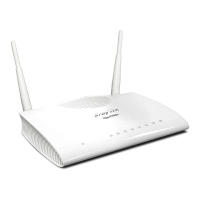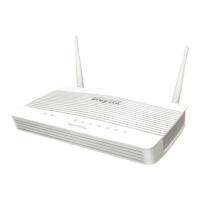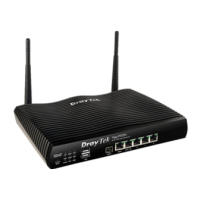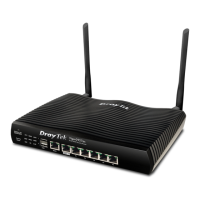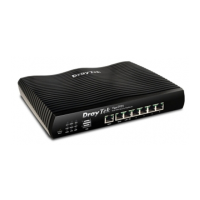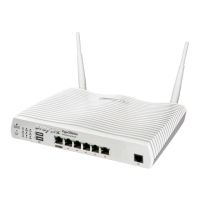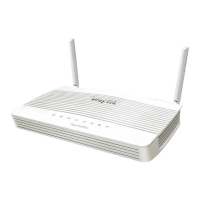VI-2 Bandwidth Management
VI-2 Bandwidth Management
Sessions Limit
Sessions Limit
A PC with private IP address can access to the Internet via NAT router. The router will
generate the records of NAT sessions for such connection. The P2P (Peer to Peer)
applications (e.g., BitTorrent) always need many sessions for procession and also they will
occupy over resources which might result in important accesses impacted. To solve the
problem, you can use limit session to limit the session procession for specified Hosts.
Bandwidth Limit
Bandwidth Limit
The downstream or upstream from FTP, HTTP or some P2P applications will occupy large of
bandwidth and affect the applications for other programs. Please use Limit Bandwidth to
make the bandwidth usage more efficient.
Quality of Service (QoS)
Quality of Service (QoS)
Deploying QoS (Quality of Service) management to guarantee that all applications receive
the service levels required and sufficient bandwidth to meet performance expectations is
indeed one important aspect of modern enterprise network.
One reason for QoS is that numerous TCP-based applications tend to continually increase
their transmission rate and consume all available bandwidth, which is called TCP slow start.
If other applications are not protected by QoS, it will detract much from their performance
in the overcrowded network. This is especially essential to those are low tolerant of loss,
delay or jitter (delay variation).
Another reason is due to congestions at network intersections where speeds of
interconnected circuits mismatch or traffic aggregates, packets will queue up and traffic
can be throttled back to a lower speed. If there’s no defined priority to specify which
packets should be discarded (or in another term “dropped”) from an overflowing queue,
packets of sensitive applications mentioned above might be the ones to drop off. How this
will affect application performance?
There are two components within Primary configuration of QoS deployment:
Classification: Identifying low-latency or crucial applications and marking them for
high-priority service level enforcement throughout the network.
Scheduling: Based on classification of service level to assign packets to queues and
associated service types
The basic QoS implementation in Vigor routers is to classify and schedule packets based on
the service type information in the IP header. For instance, to ensure the connection with
the headquarter, a teleworker may enforce an index of QoS Control to reserve bandwidth
for HTTPS connection while using lots of application at the same time.
One more larger-scale implementation of QoS network is to apply DSCP (Differentiated
Service Code Point) and IP Precedence disciplines at Layer 3. Compared with legacy IP
Precedence that uses Type of Service (ToS) field in the IP header to define 8 service classes,
DSCP is a successor creating 64 classes possible with backward IP Precedence compatibility.
In a QoS-enabled network, or Differentiated Service (DiffServ or DS) framework, a DS
domain owner should sign a Service License Agreement (SLA) with other DS domain owners
to define the service level provided toward traffic from different domains. Then each DS
node in these domains will perform the priority treatment. This is called per-hop-behavior
(PHB). The definition of PHB includes Expedited Forwarding (EF), Assured Forwarding (AF),
and Best Effort (BE). AF defines the four classes of delivery (or forwarding) classes and three
levels of drop precedence in each class.
Vigor routers as edge routers of DS domain shall check the marked DSCP value in the IP
header of bypassing traffic, to allocate certain amount of resource execute appropriate
policing, classification or scheduling. The core routers in the backbone will do the same
Vigor2762 Series User’s Guide

